Manila Ware Pottery - The Ceramic Heritage of the Philippines
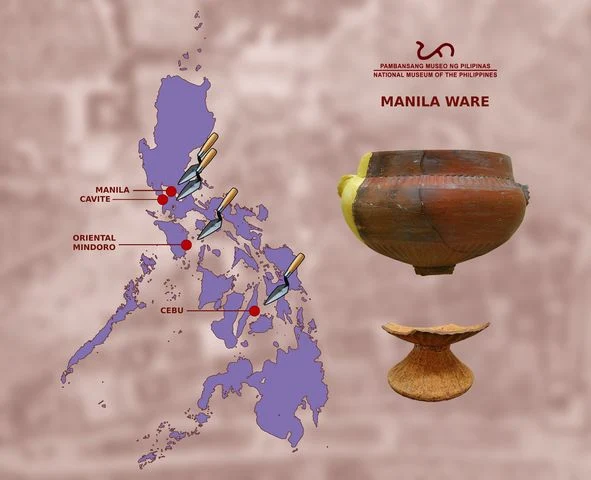 |
| Poster by Timothy James Vitales / NMP Archaeology Division |
First observed at the former Bagumbayan Site and Ermita School Garden in Manila in 1927 during the Rizal Province Archaeological Survey (1926-1930) Beyer and his team eventually collected nearly 250 kg of ceramic fragments and other archaeological materials.
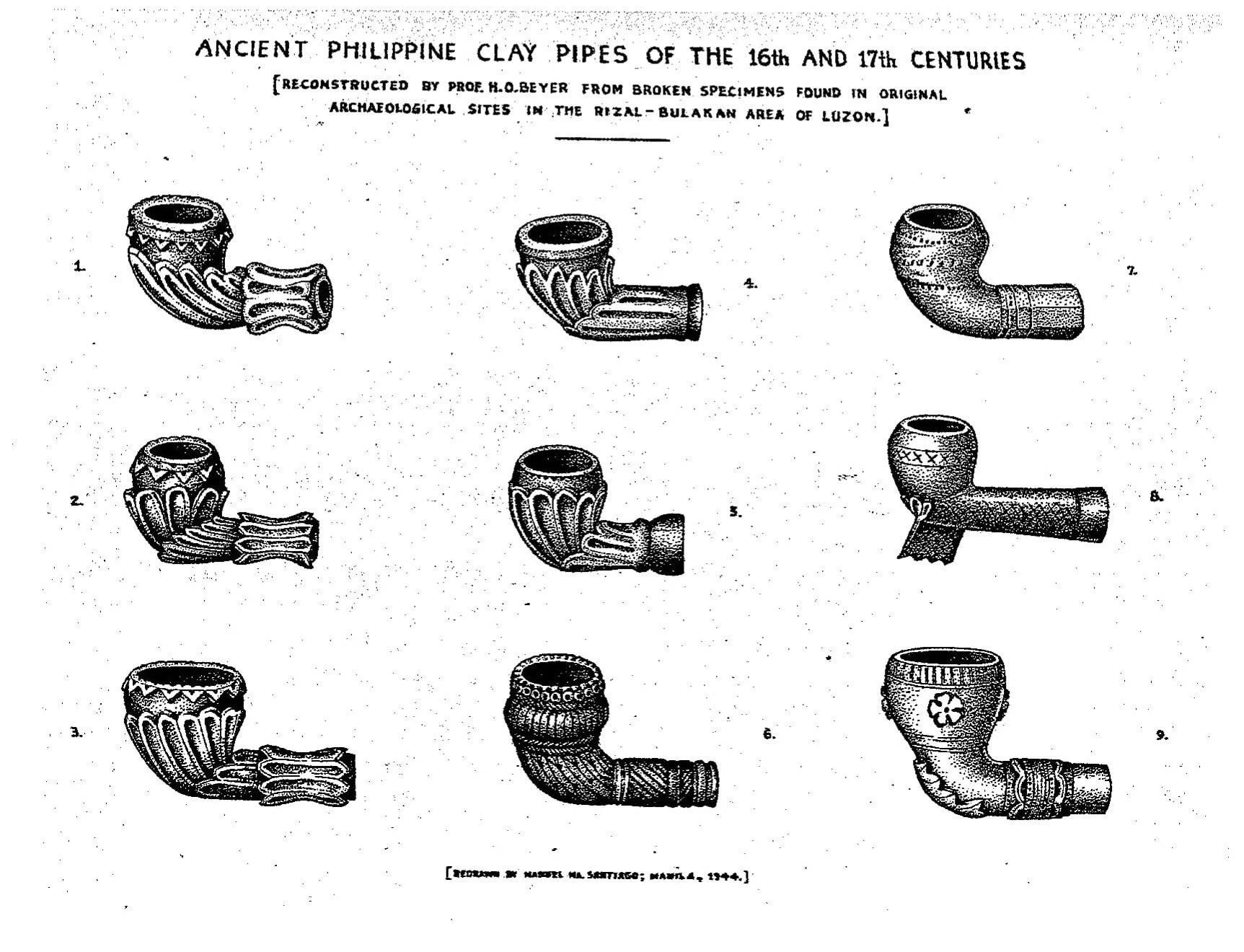 |
| Ancient Philippine Clay Pipes of the 16th and 17th centuries |
Among them were 2,236 plain and decorated sherds of Manila Ware and 92 clay-pipe pieces made from the same material. Beyer described Manila Ware as pottery, terracotta, or semi-stoneware, with the hard and fine-grained (typically unglazed) appearance in brown, buff, or brick-red color. Other materials collected during the survey were an assortment of vases, small jars, bottles, and stem cups or goblets that Beyer described as fluted (or scalloped), combed, and incised.
Former NMP Museum Curator and Assistant Director Jesus Peralta described the Manila Ware as a relatively high-fired earthenware with a red-colored body, matching Beyer’s observations of pottery appearing in various forms as described above.
Donna Mae Arriola made a comprehensive scientific study of the Manila Ware pottery to analyze their material composition. This was part of her master’s thesis in the University of the Philippines’ Archaeological Studies Program.
She used infrared spectroscopy analysis to determine the mineral composition of six samples of Manila Ware sherds. Infrared spectroscopy analysis works by observing how much radiation is absorbed by a material and comparing the results with established values of identified compounds.
Her research showed that the sherds have a combination of quartz, feldspar, and carbonates such as calcite. It also showed that the Manila Ware samples from Cavite, Manila, and Mindoro have the same composition, and possibly have the same clay source.
Beyer used the term “Manila Ware period,” which he determined to persist between the 16th and the early 19th century and was categorized in three phases. These phases bore Manila Ware variants, which differed in the material used for production.
The earliest Manila Ware objects were made from more fine-grained clay, while those manufactured in the mid phase were made from slightly coarser material that burned to clear brick-red. Objects in the latter stage had a coarse and porous body. According to Beyer, the change in the material used for Manila Ware pottery production might be due to the exhaustion of clay that were utilized during the early phases.
Further investigation yielded evidence that the Manila Ware pottery were fired at the kiln sites in the areas formerly known as San Pedro de Makati. Beyer’s visit to the area in 1931 led to his discovery of three defunct kilns. After an excavation around the site in the vicinity of the Pasig River, it led to the discovery of two other Manila Ware kilns, ancient water dumps, and several thousand pottery sherds similar to those found at the Bagumbayan site and the Ermita School Garden.
Manila Ware’s production replicates the form and style of European goblets, plates, cover bowls and pipes. Researchers then have assumed that the production of Manila Ware might have been intended for the elite market, part of trade items in the Manila-Acapulco network through the Manila Galleon in the 17th century.
Mindanao Pottery
Earthenware bowls, pots, jars and stoves are still very common in many Filipino households despite the introduction of metal and plastic wares.
The existence of ceramic tradition in the Philippines has been recorded 4,000 years ago. Their forms vary from plain and simple household cooking pots to elaborately decorated ritual bowls and jars, demonstrating the craftsmanship and network of social interaction of different communities. Pots used as liquid containers were coated with resin to block porosity while maintaining its durability. Other earthenware vessels have handles or are incised with curvilinear motifs on the shoulders.
In Mindanao, the production and movement of local status goods, such as earthenware required in ritual and mortuary rites, were facilitated by localized interactions between different Lumad groups, as well as their Moro trading partners. The Bagobo exchanged their high-quality knives and brassware with cooking pots and other household items from coastal and lowland groups. Pottery from the Sama of Sulu archipelago, particularly the coated pots, were among the traded items between them and the Agusan people in northeastern Mindanao. The Sama group, whose technology for pottery has been established as early as 800 Common Era (C.E.), was also the source of earthenware of the Tausug, Yakan, and Chavacano in southwestern Mindanao. Archaeological artifacts consisting of earthenware sherds found in the Ambangan site in Butuan suggest a connection with the Sama pottery tradition that used local clay and employed paddle and anvil technique in production.
In the southern coastal town of Alburquerque in Bohol in the Visayas, the production of kun/kolun or earthenware pots similar to those found in Mindanao, is tied with their pre-colonial tradition of salt-making. The Bol-anons reached as far as Mindanao to trade their asin tibuok (whole sea salt) in clay pots with rice and other important commodities with the locals.
In some communities, earthenware pots also play an important role in rituals and other customary practices. Among the Manobo, a clay pot (kodon) with a hole broken in the bottom, filled with boiled rice and hung under the roof of the grave, is part of the traditional interment practice which represents the journey of the deceased onto the afterworld. On the other hand, a pot (kurey) embodies the basic concept of an independent household or family among the Teduray. As such, children are expected to eat from a new pot when they marry and have separate households from their parents.
A selection of the Manila Ware pottery are currently on display in the exhibition “Palayok: The Ceramic Heritage of the Philippines” in the National Museum of Anthropology.
____________
Text and photos by Sherina Aggarao, Gregg Alfonso Abbang & Nida Cuevas, poster by Timothy James Vitales / NMP Archaeology Division
©️ National Museum of the Philippines (2021)
Photo captions: Illustrations of Manila Ware specimens (image from the Manila Ware: Notes on ancient Philippine pottery, written by H. Otley Beyer. Published in Bulawan: Journal of Philippine Arts and Culture 17 ©2004.)

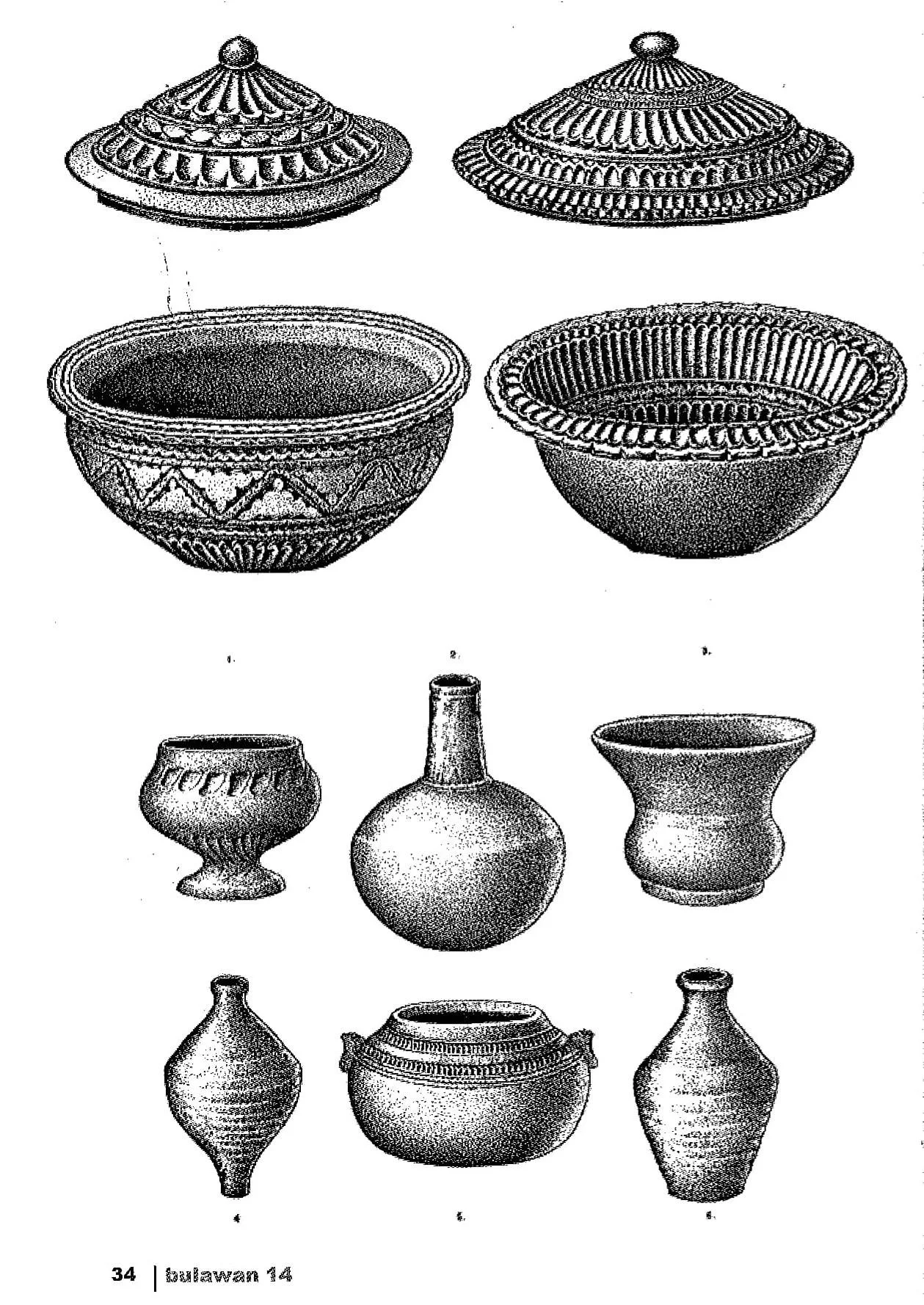
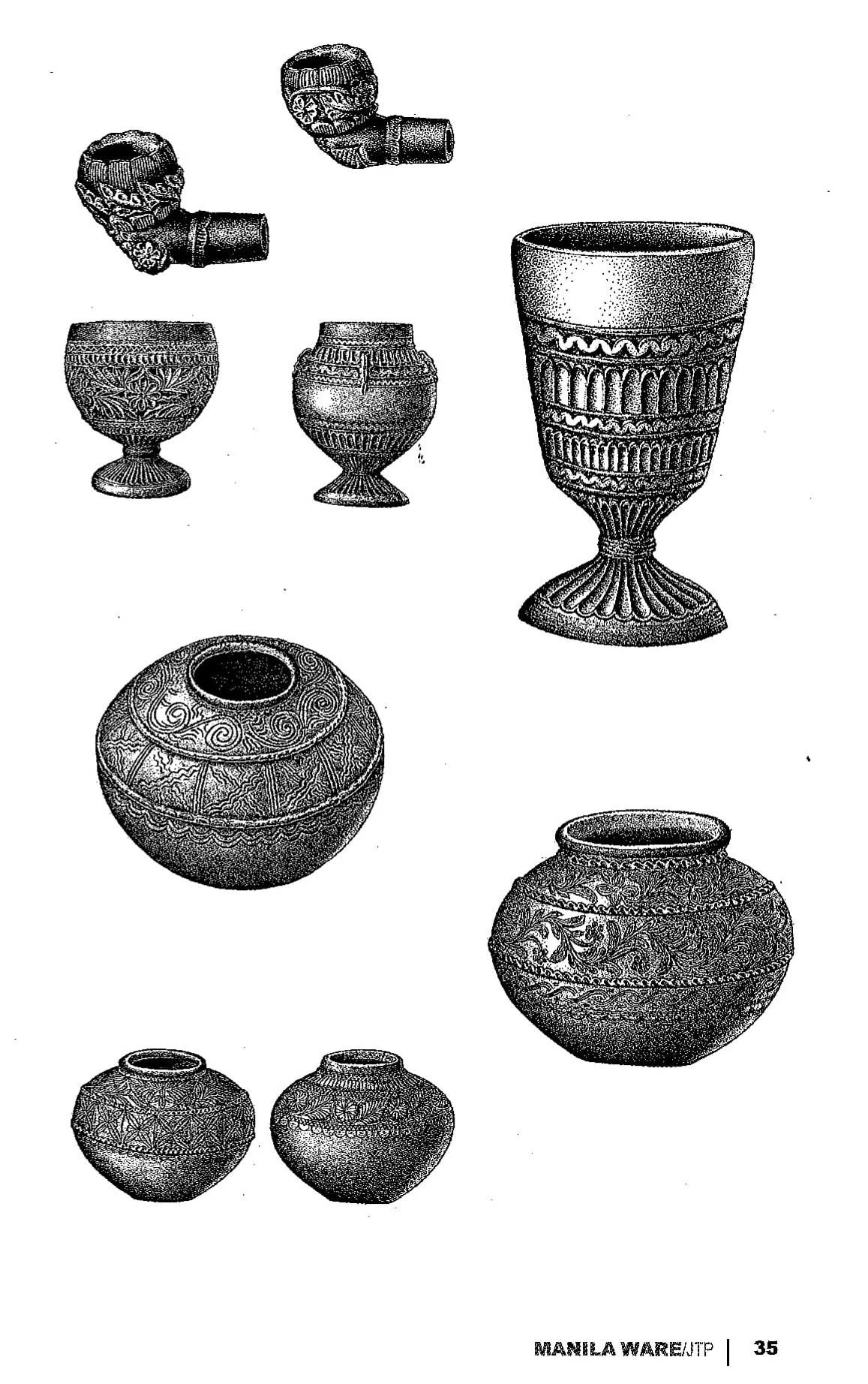
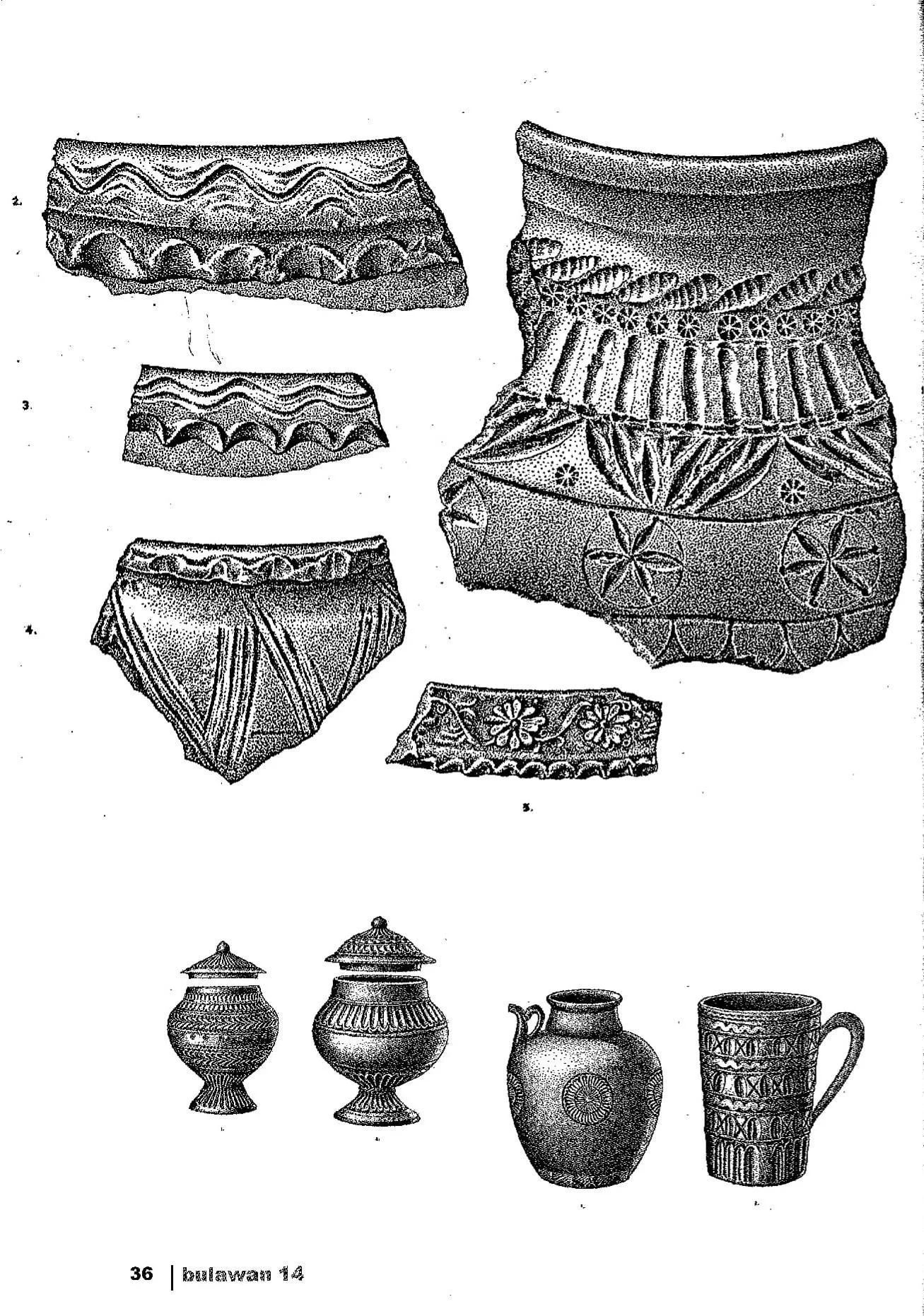
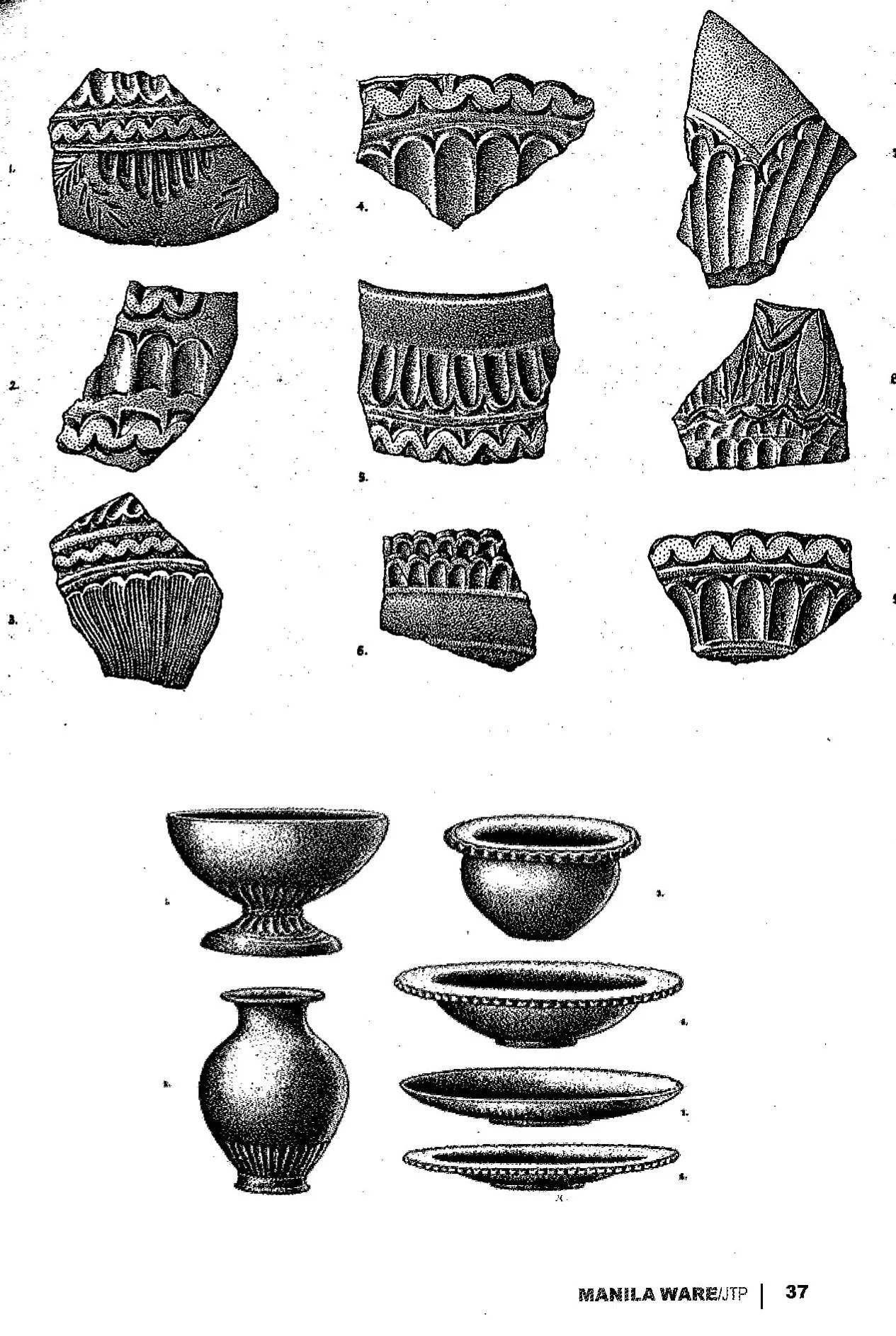
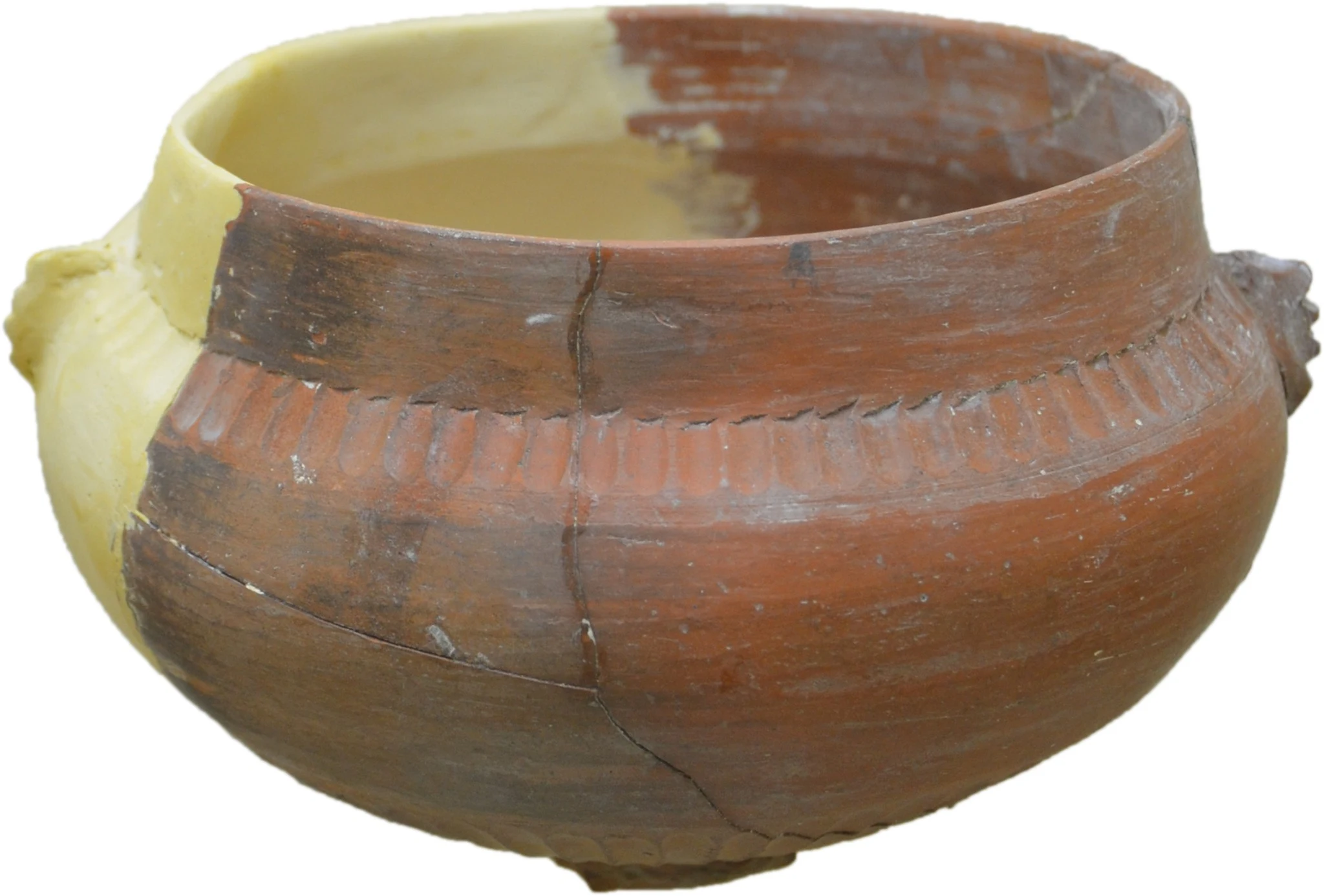
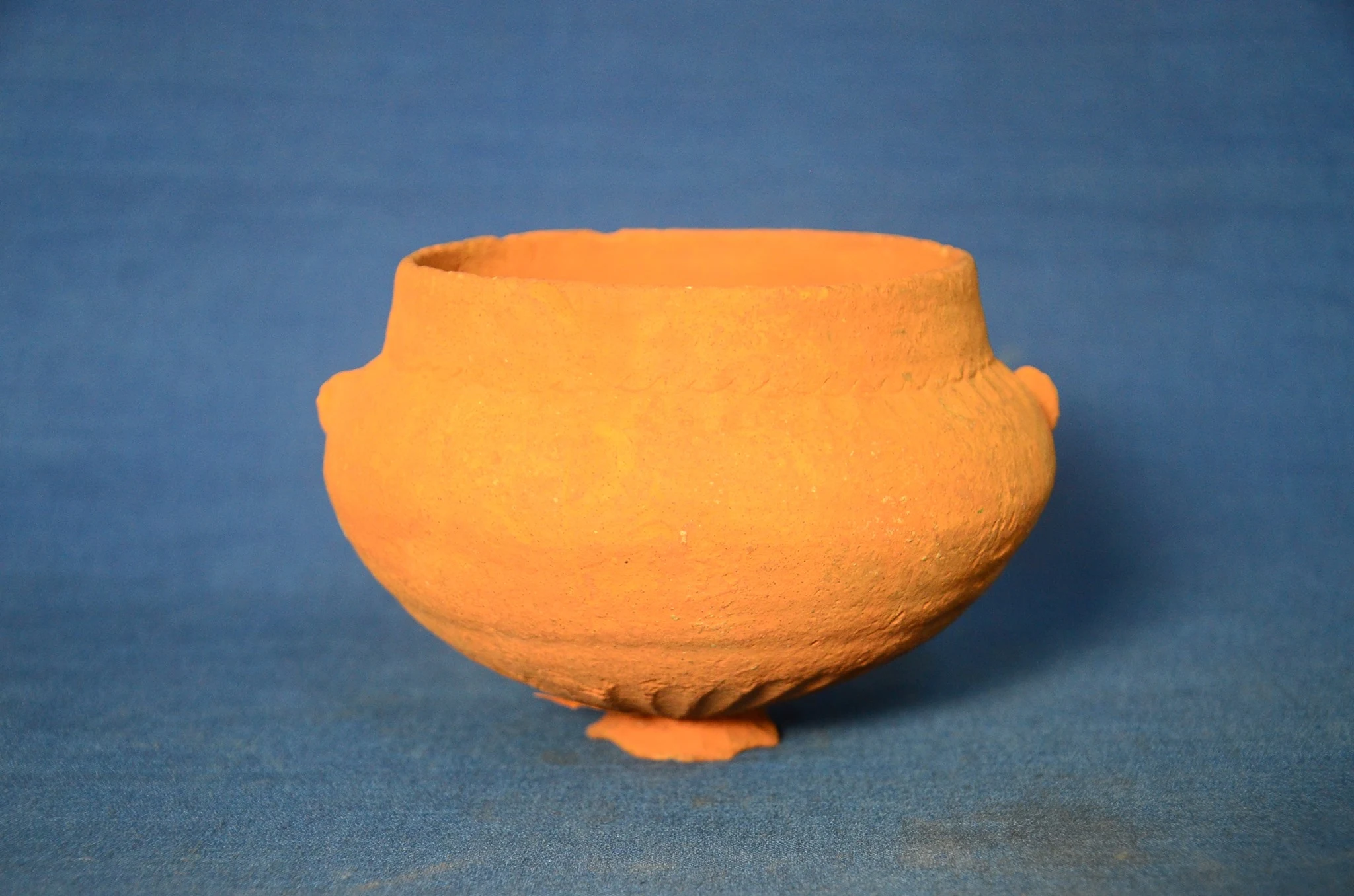
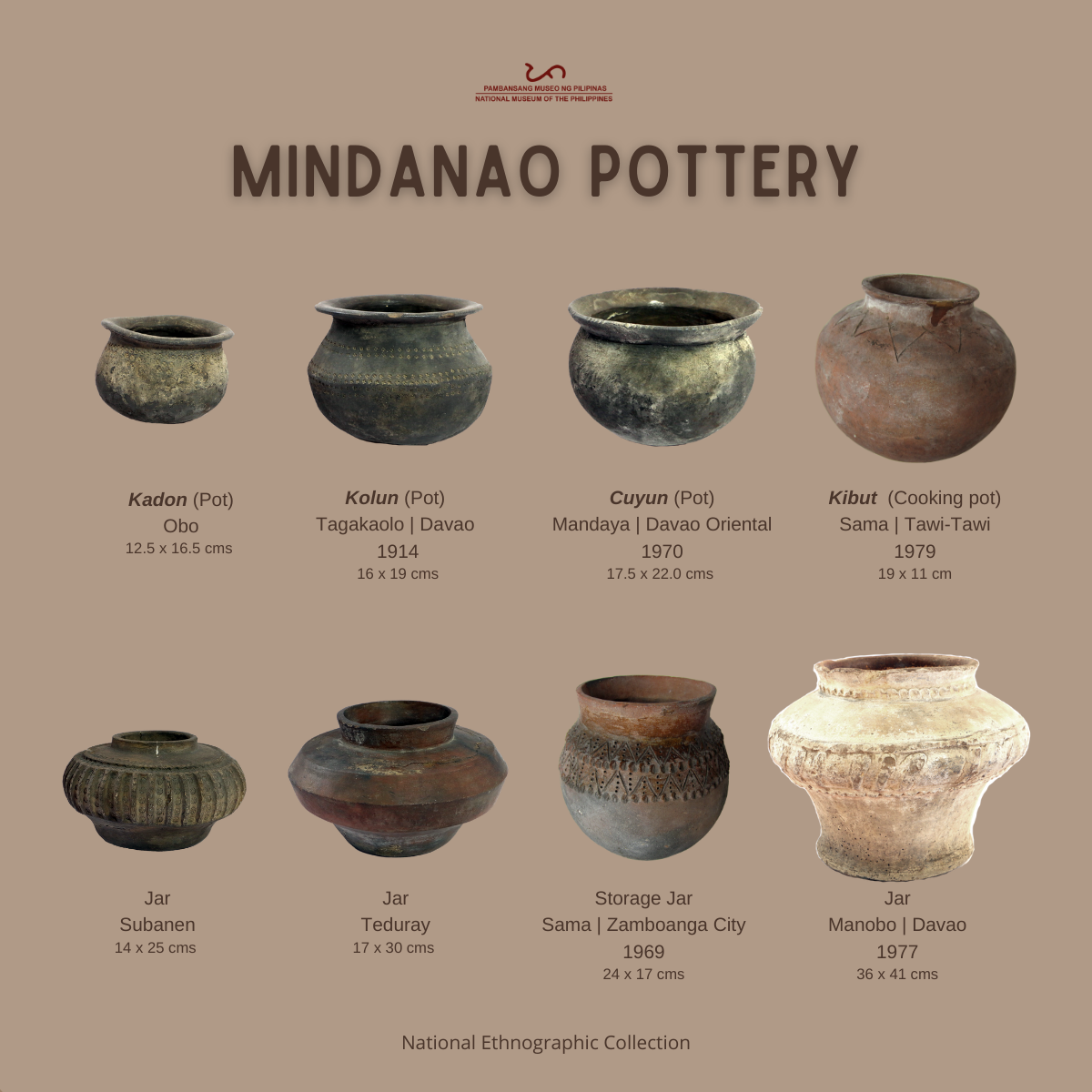

2 comments:
Galing sa national museum yung text and photos cite it properly
Citation is at the bottom of the article.
Got Something to Say? Thoughts? Additional Information?